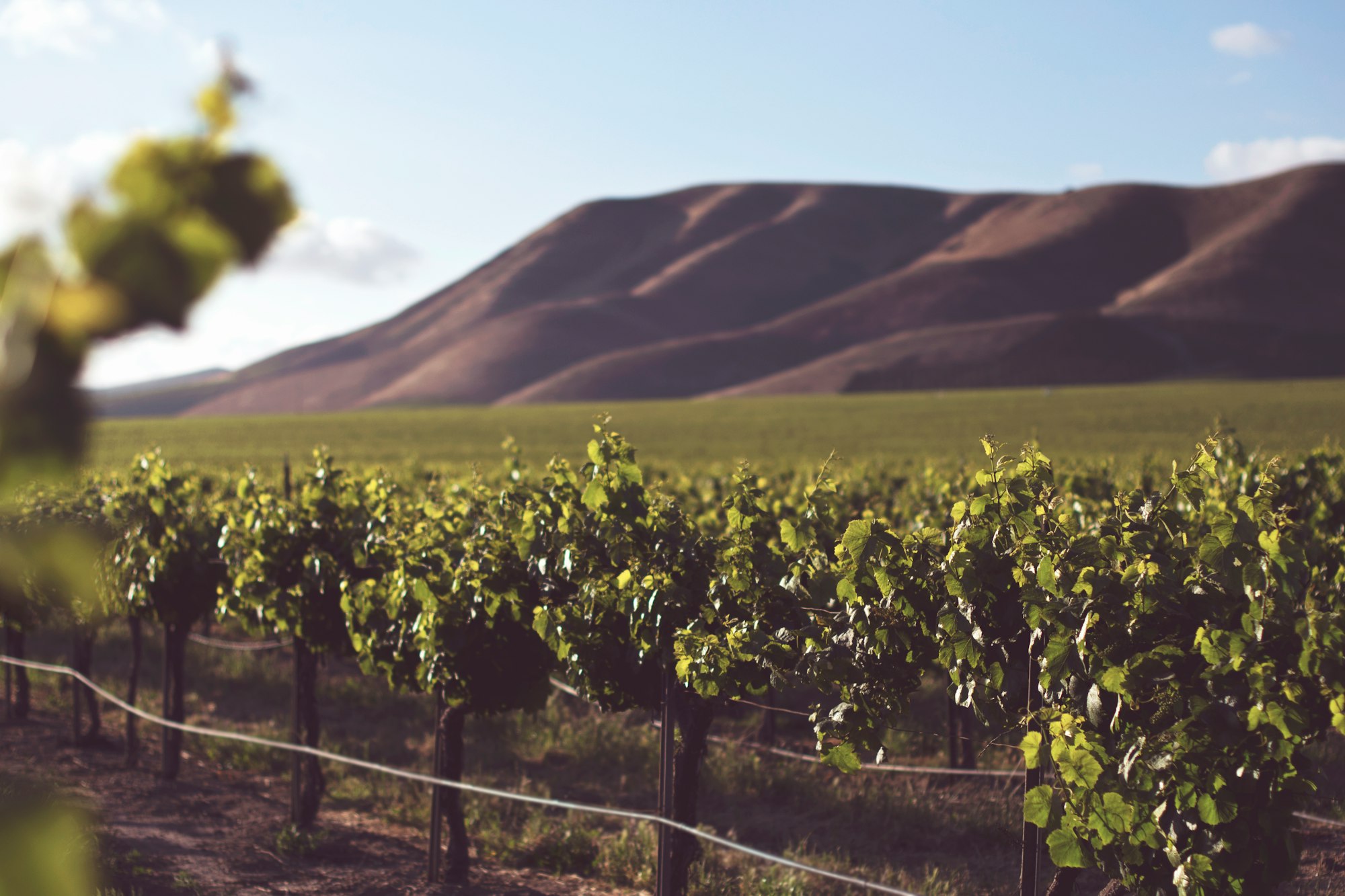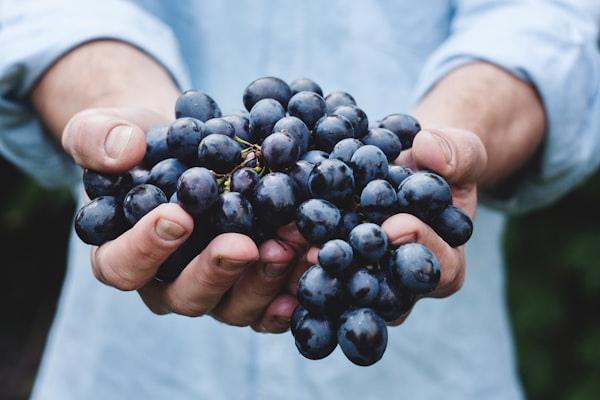Red wine is a popular alcoholic beverage known for its rich and complex flavors. It is made from dark-colored grapes and is typically aged in oak barrels to enhance its taste and aroma. Red wine is enjoyed by millions of people around the world and is often served with meals or as a standalone drink.
Choosing the best red wine can be a daunting task, especially for those who are new to the world of wine. With so many different varieties and brands available, it can be challenging to know where to start. However, by understanding the different types of red wine and their characteristics, it is possible to find a red wine that suits your taste and preferences. Whether you prefer a full-bodied Cabernet Sauvignon or a fruity Pinot Noir, there is a red wine out there for everyone. In this article, we will explore some of the best red wines available in 2023 and provide insight into what makes them stand out from the rest.
Understanding Red Wines
Red wine is a complex beverage that has been enjoyed for centuries. It is made from a variety of grapes, each with its unique flavor profile. Understanding red wine can be challenging, but it is worth the effort. In this section, we will explore the essence and complexity of red wine.
The Essence of Red Wine
Red wine is made from dark-colored grapes that are fermented with the skins. The skins contain pigments that give the wine its red color. The skins also contain tannins, which provide structure and texture to the wine. The tannins in red wine are what make it different from white wine.
The flavor profile of red wine can vary depending on the type of grape used and the region where it was grown. Some common flavors found in red wine include black cherry, blackberry, plum, and raspberry. Red wine can also have earthy or spicy notes.
The Complexity of Red Wine
Red wine is a complex beverage that can be challenging to understand. The flavor profile of red wine can be influenced by many factors, including the type of grape used, the region where it was grown, and the winemaking process.
The tannins in red wine can also make it a bit challenging to taste. Tannins are a kind of wild substance found in the skins, seeds, and stems of grapes. They can make the wine taste bitter or astringent, especially when the wine is young.
When drinking red wine, it is essential to take the time to taste and savor it. The flavor profile of red wine can change as it ages, so it is worth trying the same wine at different stages of its life to appreciate its complexity fully.
In conclusion, red wine is a complex beverage that is worth exploring. Understanding the essence and complexity of red wine can enhance your appreciation of this ancient and beloved drink.
Key Red Wine Varieties
When it comes to red wine, there are numerous grape varieties that produce excellent wines. Each grape variety has its own unique characteristics, such as flavor profile, body, and tannins. Here are some of the most popular red wine grape varieties:
Cabernet Sauvignon
Cabernet Sauvignon is one of the most popular red wine grape varieties in the world. It is a full-bodied wine with high tannins and a rich flavor profile. Cabernet Sauvignon is often aged in oak barrels, which gives it a smoky flavor. This grape variety is commonly grown in Bordeaux, France, but it is also grown in many other regions around the world.
Pinot Noir
Pinot Noir is a light-bodied red wine that is known for its complex flavor profile. It has a delicate aroma with hints of fruit and earthy undertones. Pinot Noir is commonly grown in Burgundy, France, but it is also grown in many other regions around the world.
Syrah
Syrah, also known as Shiraz, is a full-bodied red wine that is known for its dark fruit flavors and spicy notes. It has high tannins and is often aged in oak barrels. Syrah is commonly grown in the Rhône Valley in France, but it is also grown in many other regions around the world.
Malbec
Malbec is a medium-bodied red wine that is known for its dark fruit flavors and smoky undertones. It has moderate tannins and is often aged in oak barrels. Malbec is commonly grown in Argentina, but it is also grown in many other regions around the world.
Merlot
Merlot is a medium-bodied red wine that is known for its soft tannins and fruit-forward flavor profile. It is often blended with other grape varieties, such as Cabernet Sauvignon. Merlot is commonly grown in Bordeaux, France, but it is also grown in many other regions around the world.
Grenache
Grenache, also known as Garnacha, is a medium-bodied red wine that is known for its fruity flavor profile and low tannins. It is commonly grown in the Rhône Valley in France and in Spain.
Red Blend
Red blend wines are made by blending two or more grape varieties together. These wines can have a wide range of flavor profiles and characteristics, depending on the grape varieties used. Red blend wines are popular in many regions around the world.
Bordeaux
Bordeaux is a blend of several grape varieties, including Cabernet Sauvignon, Merlot, and Cabernet Franc. It is a full-bodied wine with high tannins and a complex flavor profile. Bordeaux is commonly grown in the Bordeaux region of France.
Petit Verdot
Petit Verdot is a full-bodied red wine that is often blended with other grape varieties, such as Cabernet Sauvignon and Merlot. It has high tannins and a dark fruit flavor profile. Petit Verdot is commonly grown in Bordeaux, France, but it is also grown in many other regions around the world.
Nebbiolo
Nebbiolo is a full-bodied red wine that is known for its high tannins and complex flavor profile. It has a distinct aroma with hints of rose petals and tar. Nebbiolo is commonly grown in the Piedmont region of Italy.
Chianti Classico
Chianti Classico is a medium-bodied red wine that is made from the Sangiovese grape variety. It has a fruity flavor profile with moderate tannins. Chianti Classico is commonly grown in the Chianti region of Tuscany, Italy.
Zinfandel
Zinfandel is a medium to full-bodied red wine that is known for its fruity flavor profile and high alcohol content. It is commonly grown in California, USA.
Cabernet Franc
Cabernet Franc is a medium-bodied red wine that is often blended with other grape varieties, such as Cabernet Sauvignon and Merlot. It has a fruity flavor profile with moderate tannins. Cabernet Franc is commonly grown in Bordeaux, France, but it is also grown in many other regions around the world.
Sangiovese
Sangiovese is a medium-bodied red wine that is known for its high acidity and fruity flavor profile. It is commonly grown in Tuscany, Italy.
Mourvèdre
Mourvèdre, also known as Monastrell, is a full-bodied red wine that is known for its dark fruit flavors and high tannins. It is commonly grown in the Rhône Valley in France and in Spain.
Gamay
Gamay is a light-bodied red wine that is known for its fruity flavor profile and low tannins. It is commonly grown in the Beaujolais region of France.
Renowned Winemaking Regions
Wine is produced in many regions around the world, each with its own unique characteristics and flavor profiles. Some regions are particularly renowned for their red wines, which are highly sought after by wine enthusiasts and collectors. In this section, we will explore some of the most famous winemaking regions for red wines.
Burgundy
Burgundy, located in eastern France, is one of the most famous wine regions in the world. The region is particularly renowned for its Pinot Noir grapes, which produce some of the most elegant and complex red wines in the world. Burgundy is divided into five subregions, each with its own unique terroir and wine styles. Some of the most famous Burgundy wines include Gevrey-Chambertin, Chambolle-Musigny, and Volnay.
Rioja
Rioja is a wine region in northern Spain that is known for its rich and complex red wines. The region is particularly famous for its Tempranillo grapes, which produce wines with a distinctive flavor profile that is often described as earthy, spicy, and leathery. Rioja wines are typically aged for several years in oak barrels, which gives them a unique flavor and aroma. Some of the most famous Rioja wines include Gran Reserva, Reserva, and Crianza.
Barolo
Barolo is a wine region in the Piedmont region of Italy that is known for its powerful and complex red wines made from the Nebbiolo grape. Barolo wines are often described as tannic, full-bodied, and age-worthy, with flavors of cherry, licorice, and truffles. Barolo wines are typically aged for several years in oak barrels, which gives them a distinctive flavor and aroma. Some of the most famous Barolo wines include Cannubi, Brunate, and Rocche dell'Annunziata.
Spain
Spain is home to many famous wine regions, including Rioja, Ribera del Duero, and Priorat. These regions are known for their rich and complex red wines made from indigenous grape varieties such as Tempranillo, Garnacha, and Monastrell. Spanish wines are often described as bold, spicy, and full-bodied, with flavors of black fruit, leather, and tobacco.
Portugal
Portugal is known for its fortified wines such as Port and Madeira, but the country also produces some excellent red wines. The Douro Valley is particularly famous for its red wines, which are made from indigenous grape varieties such as Touriga Nacional, Tinta Roriz, and Touriga Franca. Portuguese red wines are often described as full-bodied and complex, with flavors of dark fruit, chocolate, and spice.
California
California is one of the most important wine regions in the world, producing a wide range of red wines from Cabernet Sauvignon, Merlot, Pinot Noir, and Zinfandel grapes. California wines are often described as fruit-forward, with flavors of blackberry, cassis, and vanilla. Some of the most famous California wines include Napa Valley Cabernet Sauvignon, Sonoma Pinot Noir, and Paso Robles Zinfandel.
Beaujolais
Beaujolais is a wine region in eastern France that is known for its light and fruity red wines made from the Gamay grape. Beaujolais wines are often described as fresh and lively, with flavors of cherry, raspberry, and cranberry. The most famous Beaujolais wine is Beaujolais Nouveau, which is released every year in November.
Barbaresco
Barbaresco is a wine region in the Piedmont region of Italy that is known for its elegant and complex red wines made from the Nebbiolo grape. Barbaresco wines are often described as lighter and more elegant than Barolo wines, with flavors of cherry, rose, and tar. Some of the most famous Barbaresco wines include Asili, Rabajà, and Pajè.
Vega Sicilia
Vega Sicilia is a winery in the Ribera del Duero region of Spain that is known for its high-quality and age-worthy red wines made from Tempranillo and Cabernet Sauvignon grapes. Vega Sicilia wines are often described as powerful and complex, with flavors of black fruit, leather, and tobacco. The winery produces several different wines, including the famous Único, which is only released in exceptional vintages.
These renowned winemaking regions produce some of the most sought-after red wines in the world. Whether you prefer elegant and complex wines or bold and powerful wines, there is a region and a wine style to suit your tastes.
Understanding Tannins in Red Wines
Tannins are naturally occurring compounds in grapes and other fruits that give red wines their characteristic structure and complexity. They are responsible for the dry, puckering sensation that you feel in your mouth when you drink a glass of red wine.
Tannins come from the skins, seeds, and stems of the grapes, as well as from the oak barrels that the wine is aged in. They are more prevalent in red wines than in white wines because red wines are fermented with the grape skins, which contain the tannins.
Tannins can be described as either hard or soft. Hard tannins are more astringent and can make the wine taste bitter and harsh, while soft tannins are smoother and more supple. The tannins in a wine can also vary depending on the grape variety, the region where it was grown, and the winemaking techniques used.
One way to tell if a wine has a lot of tannins is to look for its color. Wines with more tannins tend to be darker in color, while wines with fewer tannins are lighter. Another way to tell is to pay attention to the texture of the wine in your mouth. Wines with more tannins will feel more drying and astringent, while wines with fewer tannins will feel softer and smoother.
It's important to note that tannins can also change over time. Young red wines tend to have more aggressive tannins that can benefit from aging, while older wines may have softer, more integrated tannins that provide a smoother mouthfeel.
Overall, understanding tannins can help you appreciate and enjoy red wines more fully. By paying attention to the tannins in a wine, you can better understand its structure and complexity, and make more informed decisions about what to pair it with.
Exploring Red Wine Blends
Red wine blends are a popular choice among wine enthusiasts. These blends combine two or more grape varieties to create a unique flavor profile. While some blends are made with grapes from a single region, others may use grapes from different regions to create a unique taste.
Bordeaux-Style
Bordeaux-style blends are named after the Bordeaux region in France. These blends typically include Cabernet Sauvignon, Merlot, Cabernet Franc, Petit Verdot, and Malbec. The exact blend may vary depending on the winemaker's preference. Bordeaux-style blends are known for their complex flavors and aromas. They are often aged in oak barrels to develop a rich and smooth taste.
New World
New World blends are made outside of Europe, often in regions such as Australia, South Africa, and the United States. These blends may use traditional Bordeaux grapes or other grape varieties such as Syrah, Zinfandel, and Sangiovese. New World blends are known for their bold and fruity flavors. They may also have a higher alcohol content than traditional Bordeaux-style blends.
When exploring red wine blends, it is important to consider the grape varieties used, the region where the grapes were grown, and the winemaking process. Bordeaux-style blends are a classic choice, while New World blends offer a modern twist on this traditional style. Ultimately, the best red wine blend is one that suits your personal taste preferences.
The Winemaking Process
Winemaking is the process of producing wine from grapes. The process involves several steps, including harvesting, crushing, fermentation, clarification, aging, and bottling. The winemaking process is crucial in determining the quality, flavor, and aroma of the wine.
Harvesting
The first step in winemaking is harvesting the grapes. Grapes are usually harvested in the fall when they are fully ripe. The timing of the harvest is critical as it affects the sugar, acid, and tannin levels in the grapes. Grapes are typically harvested by hand or machine.
Crushing
After harvesting, the grapes are crushed to extract the juice. The crushing process can be done manually or mechanically. Manual crushing involves stomping on the grapes with bare feet, while mechanical crushing uses machines to crush the grapes. After crushing, the grape juice, skins, and seeds are placed in a vat for fermentation.
Fermentation
Fermentation is the process by which grape juice is turned into wine. During fermentation, yeast consumes the sugar in the grape juice and produces alcohol and carbon dioxide. The temperature and duration of fermentation vary depending on the type of wine being produced. Red wines are fermented with the grape skins, while white wines are fermented without the skins.
Clarification
After fermentation, the wine is clarified to remove any remaining solids and impurities. The clarification process involves filtering the wine through a series of filters or fining agents. Fining agents can include egg whites, bentonite, or activated charcoal.
Aging
After clarification, the wine is aged in barrels or tanks. Aging allows the wine to develop its flavor and aroma. The length of aging varies depending on the type of wine. Red wines are typically aged longer than white wines.
Bottling
Once the wine has aged, it is bottled and labeled. Bottling is the final step in the winemaking process. The wine is corked or capped, and then stored in a cool, dark place until it is ready to be consumed.
Overall, the winemaking process is a complex and intricate process that requires skill and knowledge. The quality of the wine depends on the grapes used, the winemaking techniques employed, and the aging process.
The Cream of the Crop
When it comes to red wines, there are some bottles that stand out from the rest. These are the cream of the crop, the wines that are truly exceptional and worth seeking out. Here are some of the best red wines that have earned this designation:
Chateau d'Yquem
Chateau d'Yquem is a Sauternes estate that is widely considered to be the pinnacle of sweet-wine production. The vineyards surround the chateau in Bordeaux, southwestern France. This wine is made from botrytized grapes that have been affected by noble rot. The result is a wine that is rich, complex, and incredibly sweet. It's a wine that is often compared to liquid gold, and it's one that every wine lover should try at least once.
Red Burgundy
Red Burgundy is a wine that is made from Pinot Noir grapes grown in the Burgundy region of France. This wine is known for its haunting aromatics of raspberries and red flower petals, which lead to a palate laden with earth-tinged flavors of cranberries, cherries, used leather, and sweet spice. It's a wine that is often considered to be the cream of the crop when it comes to Pinot Noir, and it's one that is highly sought after by collectors.
Carbonic Reds
Carbonic reds are wines that are made using carbonic maceration, a technique that involves fermenting whole grapes in a carbon dioxide-rich environment. This process results in wines that are fruity, low in tannins, and easy to drink. Two winemakers who are known for their carbonic reds are Jean Foillard and Marcel Lapierre. Their wines are often described as being the cream of the crop when it comes to carbonic reds.
These are just a few examples of the cream of the crop when it comes to red wines. Whether you're a collector or just a casual wine drinker, these wines are sure to impress.
Famous Wineries
When it comes to red wines, there are some wineries that have become famous for producing exceptional quality wines. Here are some of the most renowned wineries that are worth checking out:
Gaja Winery
The Gaja Winery is located in Italy's Piedmont region and is known for producing some of the best Barbaresco and Barolo wines in the world. The winery was founded in 1859 and has been passed down through five generations of the Gaja family. The winery is now run by Angelo Gaja, who is considered to be one of the most influential winemakers in Italy. The Gaja Winery produces a range of red wines, including the Gaja Barbaresco, which has been named one of the best red wines in the world by Wine Spectator.
Château Margaux
Château Margaux is a French winery located in the Bordeaux region. The winery has a long history, dating back to the 12th century, and is known for producing some of the finest Bordeaux wines in the world. The winery produces a range of red wines, including the Château Margaux, which is considered to be one of the most expensive wines in the world.
Opus One Winery
The Opus One Winery is a joint venture between Robert Mondavi and Baron Philippe de Rothschild. The winery is located in Napa Valley, California and is known for producing some of the best Bordeaux-style wines in the world. The winery produces a range of red wines, including the Opus One, which is a blend of Cabernet Sauvignon, Merlot, Cabernet Franc, Petit Verdot, and Malbec.
Penfolds Winery
Penfolds Winery is an Australian winery that was founded in 1844. The winery is known for producing some of the best Shiraz wines in the world, including the Penfolds Grange, which is considered to be one of the most iconic wines in Australia. The winery also produces a range of other red wines, including the Penfolds Bin 389, which is a blend of Cabernet Sauvignon and Shiraz.
Vega Sicilia Winery
The Vega Sicilia Winery is located in Spain's Ribera del Duero region and is known for producing some of the best Tempranillo wines in the world. The winery was founded in 1864 and is now owned by the Alvarez family. The winery produces a range of red wines, including the Vega Sicilia Único, which is considered to be one of the best wines in Spain.
Bay Bridge Merlot
This Merlot has a beautiful, deep red color and a dry, yet smooth taste. It is medium-bodied and has a balanced tannin structure. The flavor profile includes notes of black cherry, blackberry, and vanilla. It is a versatile wine that pairs well with a variety of dishes, such as grilled meats, pasta, and cheese.
These wineries are just a few of the many famous wineries that produce exceptional quality red wines. Each winery has its own unique history, style, and flavor profile, making them all worth exploring for wine enthusiasts.
Influence of Climate on Red Wines
The climate in which grapes are grown plays a crucial role in determining the flavor and quality of the wine produced. Different grape varieties thrive in different climates, and even the same grape variety can produce vastly different wines depending on the climate in which it is grown.
Warm Climate Red Wines
Warm climate regions tend to have more consistent temperatures throughout the season, which gives grapes ample opportunity to become fully ripe. As a result, warm climate red wines tend to be fuller-bodied, with higher alcohol content and lower acidity. They often have flavors of dark fruit, chocolate, and spices. Some examples of warm climate red wine regions include:
- Napa Valley, California
- Barossa Valley, Australia
- Douro Valley, Portugal
Cool Climate Red Wines
Cool climate regions experience more significant temperature fluctuations throughout the season, which can make it more challenging for grapes to ripen fully. However, this can also result in wines with higher acidity and lower alcohol content, which can give them a more refreshing and crisp taste. Cool climate red wines often have flavors of red fruit, herbs, and earthy notes. Some examples of cool climate red wine regions include:
- Burgundy, France
- Willamette Valley, Oregon
- Yarra Valley, Australia
Other Factors
In addition to climate, other factors such as soil type, altitude, and rainfall can also play a role in determining the flavor and quality of red wines. For example, grapes grown in volcanic soil may produce wines with a distinct minerality, while grapes grown at higher altitudes may have more pronounced acidity.
Overall, the climate in which grapes are grown is a crucial factor in determining the flavor and quality of red wines. Whether you prefer a full-bodied, rich wine or a more refreshing and crisp option, there is a red wine out there for every palate.
The World of Port Wine
Port wine is a fortified wine that originated in the Douro Valley in Portugal. It is made by adding brandy to stop the fermentation process, leaving residual sugar in the wine. This results in a sweet wine with a higher alcohol content than regular wines.
Port wine is typically made from a blend of grape varieties, including Touriga Nacional, Touriga Franca, Tinta Roriz, and Tinta Barroca. The wine is aged in barrels, which can be made of oak, chestnut, or mahogany.
There are several types of port wine, including:
- Ruby Port: A young, fruity port wine that is aged in large oak barrels for up to three years.
- Tawny Port: Aged in smaller oak barrels for longer periods of time, resulting in a nutty, caramel flavor.
- Vintage Port: Made from the best grapes in a single vintage year, and aged for up to two years in oak barrels before being bottled.
- Late Bottled Vintage (LBV) Port: Made from grapes from a single vintage year, and aged in oak barrels for four to six years before being bottled.
Port wine is often served as a dessert wine, and pairs well with chocolate, cheese, and other rich, sweet foods. It is also a popular ingredient in cocktails, such as the classic Port and Tonic.
While Portugal is the traditional home of port wine, it is also produced in other countries, such as Australia, South Africa, and the United States. However, true port wine can only be produced in the Douro Valley, under strict regulations set by the Instituto dos Vinhos do Douro e Porto (IVDP).
In addition to port wine, the Langhe region in Italy is known for its red wines, particularly Barolo and Barbaresco. These wines are made from the Nebbiolo grape variety and are known for their full-bodied, tannic flavor. They are often aged for several years in oak barrels before being bottled, resulting in a complex, nuanced wine that pairs well with rich, hearty foods.
Wine Enthusiast's Perspective
Wine Enthusiast is a leading authority on wine, and their perspective on the best red wines is highly regarded in the industry. They have an extensive team of experts who taste thousands of wines every year and provide ratings and reviews to help consumers make informed decisions.
According to Wine Enthusiast, the best red wines are those that offer a balance of fruit, tannins, acidity, and oak. They recommend looking for wines that are complex, layered, and have a long finish. Some of their top picks for red blends include Cabernet Sauvignon-Merlot, Merlot-Malbec, and Grenache-Syrah-Mourvedré (G-S-M).
Wine Enthusiast also publishes an annual list of the top 100 wines, which includes both red and white varieties. Their 2022 list features 22 wines priced at $25 or less, including a Spanish Albariño from Rias Baixas and an Italian Lambrusco. These wines were selected based on their quality-to-price ratios, availability, and overall appeal.
In addition to their top 100 list, Wine Enthusiast also compiles a list of the top 100 best buys of the year. This list includes wines that offer exceptional value for their price point, making them accessible to a wider range of consumers. From Argentine Malbec to Washington Grenache, there is something for everyone on this list.
Overall, Wine Testers's perspective on the best red wines is informed by years of experience and a deep understanding of the industry. Their recommendations are reliable and trustworthy, making them a go-to source for wine enthusiasts and novices alike.









Member discussion